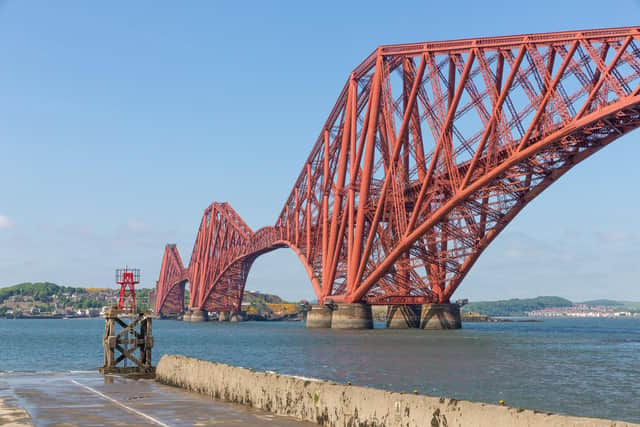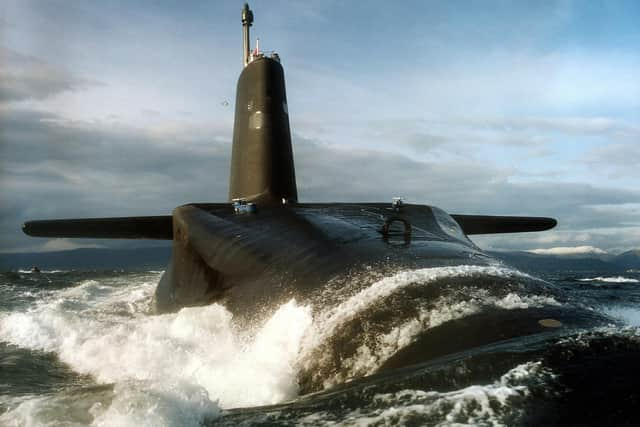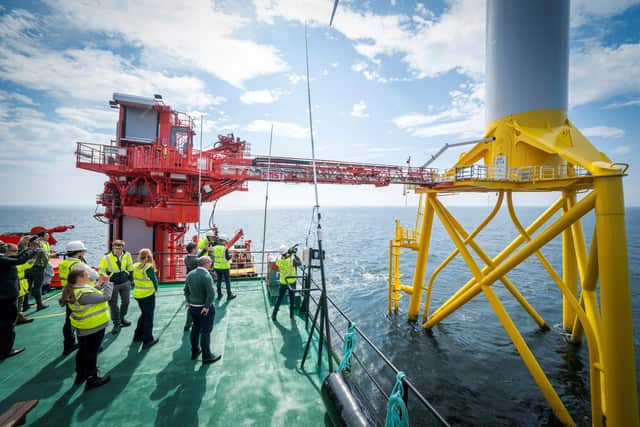Plastic in paints on bridges and offshore structures in Scotland poses major risk to environment, study finds
The findings come from a pioneering new study that has quantified plastic pollution derived from paints and varnishes for the first time.
Researchers concluded the finishes are the biggest single contributor to microplastic pollution in oceans, contributing a greater share than recognised sources such as tyres, industrial pellets and textiles.
Advertisement
Hide AdAdvertisement
Hide AdThey estimate almost two million tonnes of paint chippings land in the water each year, representing 58 per cent of all marine microplastics.


This is a significantly higher proportion, as much as three times more, than previously thought. Earlier estimates had suggested the figure was between nine and 21 per cent.
Much of it is derived from a combination of natural rusting and ongoing maintenance of major structures such as bridges, oil platforms and shipping.
Plastic waste that escapes into the environment can cause significant harm to wildlife and end up in the human food chain.


Paints and varnishes, which are used to protect everyday items such as buildings, boats, cars and almost all types of infrastructure, contain an average plastic content of 37 per cent.
But until now their ecological impacts have been difficult to accurately asses.
The study was carried out by research consultancy Environmental Action (EA) for Norway-headquartered ocean impact technology company Pinovo, which has offices in Scotland.
EA’s report, the first-ever assessment of plastic paint leakage levels worldwide, reveals the substances have a significant negative impact on the planet, marine life and ultimately human health if not disposed of and managed cleanly, safely and sustainably.
Advertisement
Hide AdAdvertisement
Hide Ad

Pinovo has worked on many paint-stripping operations across Scotland, including for the Royal Navy at its Faslane base and for oil and gas giants Shell and BP, using its ‘vacuum-cleaner-style’ paint-stripping technology on everything from ships and bridges to offshore rigs and turbines.
Chairman Declan McAdams said the new findings should serve as a “wake-up call” for the paint industry and businesses involved in ongoing maintenance of painted surfaces.
He said he believed greater care must be taken to stop paint particles from ending up in the environment in the first place.
“Action from national and transnational regulators is needed immediately, so those working with paint reconsider their paint application, maintenance and end-of-life treatment methods,” he said.
“It’s important that the industry finds less harmful and more sustainable alternatives.
“We need a systemic change in the use and management of paint now that these findings have shone a light on the extent of the pollution being caused.”
EA founder and director Dr Julien Boucher, who has worked on a number of previous plastic pollution studies, said: “The intention of this research is not to criticise paint, but to increase the level of knowledge and awareness of the issue, so as to pave the way towards a better-managed paint system where paint can deliver its full value without compromising the health of our environment.”
The Scottish Government is currently consulting on a new marine litter strategy, with submissions open until March 22.
A message from the Editor:
Thank you for reading this article. We’re more reliant on your support than ever as the shift in consumer habits brought about by coronavirus impacts our advertisers.
If you haven’t already, please consider supporting our trusted, fact-checked journalism by taking out a digital subscription.
Comments
Want to join the conversation? Please or to comment on this article.
